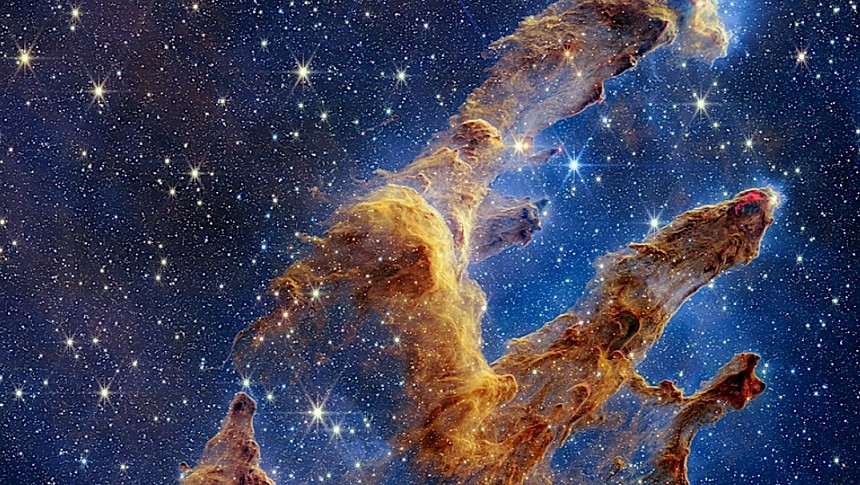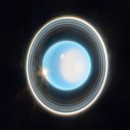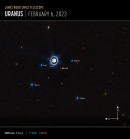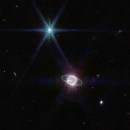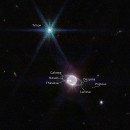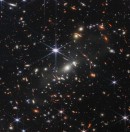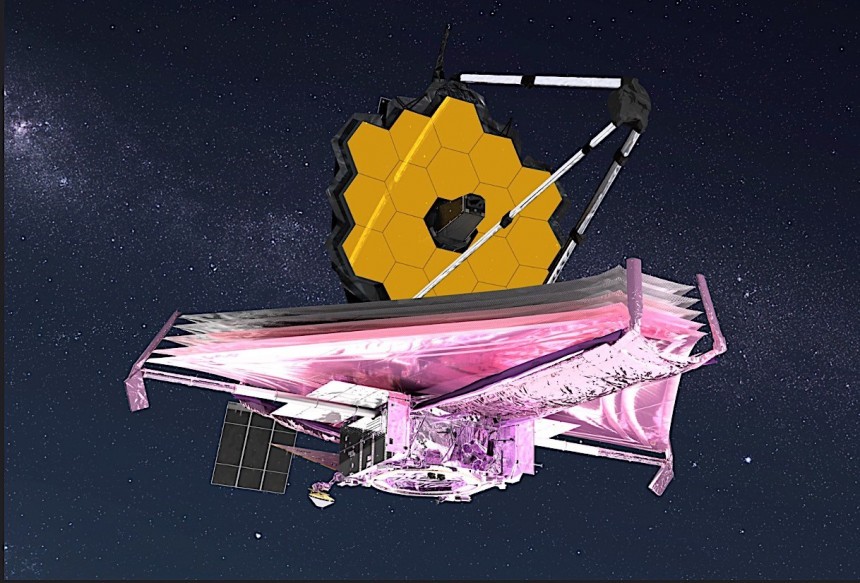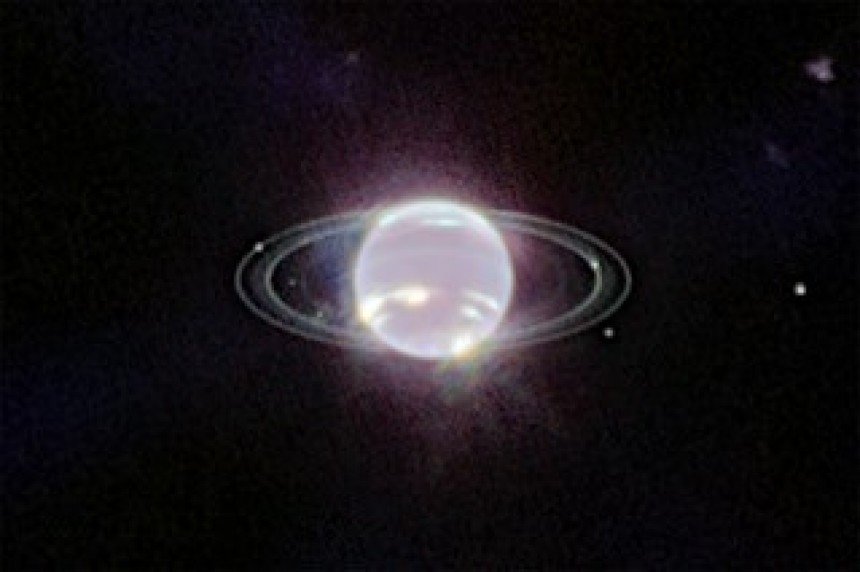After years of waiting and billions of dollars spent on it, the James Webb Space Telescope (JWST) finally departed our planet back in 2021. Presently parked at Lagrange Point 2 (L2), 930,000 miles (1.5 million km) away from home, it has sent back these past two years a lot of incredible images of the Universe. But have you ever wondered who and how decides what the thing looks at?
Like most other telescopes out there, Webb is not used by a single individual or organization. It serves the needs of astronomers the world over, but mostly from nations that helped fund and build it: the U.S., some countries of the European Union, and Canada.
There is also no common goal for the observations the telescope is to make. What it means is that literally thousands of astronomers fight for telescope time in a bid to get a sneak peek at the celestial objects that concern them the most. Let me dive deeper into that.
On May 10, 2023, the people running the telescope announced the so-called scientific program for Webb's Cycle 2. In terms we can all understand, the targets the telescope will look at for the next year or so.
NASA said there were no less than 5,450 scientists from 52 countries competing for telescope time this (let's call it) star-hunting season. Combined, they made 1,600 proposals of objects to be studied. If they all had been approved, they would have required a total of 35,000 hours of telescope time.
But there is one major problem. For Cycle 2 (lasting from July 1, 2023 to June 30, 2024), Webb has only 5,000 hours of telescope time to give. That naturally means a selection needs to be made, to allow only the ideas the most worthy and with the most potential.
So, Webb's handlers have an organization tasked with selecting those ideas. Part of the Space Telescope Science Institute (STScI), it's called the Telescope Allocation Committee (TAC) and comprises "hundreds of members of the international astronomical community."
It is TAC's job to look at, analyze, and decide which observations are backed during a Cycle. Coming back to this year's numbers, we'll tell you of the 1,600 proposals just 249 made it through, filling the entire 5,000 prime time hours the telescope has for observations in the coming year. Of the 5,450 people who made these proposals, just 1,215 can be happy their ideas were accepted.
We're told this Cycle's proposals are "balanced across a wide range of science topics from asteroids and exoplanets to cosmology," so there are probably a lot of great things we'll learn about the Universe in the year ahead. But, circling back to the topic of this story, how does TAC decide what ideas are worth it?
The first step means the proposals are sent to and received by TAC. Depending on type, size, and scientific category, they are sorted.
Large observation programs make their way anonymously to the TAC discussion panels. What "anonymously” means here is that the proposers don't know who the reviewers are, and the reviewers don't know who's behind each idea. This process is called Dual-Anonymous Peer Review (DAPR) and ensures no less-worthy program slips through the cracks based on personal sympathies, or that a more worthy one is rejected based on personal antipathies.
Each TAC panel has its own allocation of telescope time, so they must be careful to select only the best proposals. For that, first and foremost the ideas are triaged based on their submitted grades.
Then, by looking at the strengths and weaknesses of each of the ones that survived the triage, a new grade is given for a more accurate ranking. Only the "highest ranked proposals are recommended for allocation of telescope time and/or funding."
The complete list of proposals is then sent to the STScI director, who is the only person in the entire organization capable of giving the final green light.
Smaller programs, on the other hand, land in the laps of external panelists. They grade them based on three main criteria: impact within the subfield, out-of-field impact, and suitability for the observatory.
What's important to note is that even if an idea belongs to a certain individual and targets only one aspect of some observation, whatever James Webb discovers makes it into an archive. This archive is publicly available, meaning anyone with some interest and knowledge in space exploration can have a look, and that of course can lead to a lot more discoveries.
STScI already published the list of programs Webb will be focusing on over the next year. You can have a look at them all here, or you could just wait until some incredible discovery is announced. Either way, a long and seemingly fruitful year seems to be ahead of us, and the Universe only knows what new wonders Webb will share.
There is also no common goal for the observations the telescope is to make. What it means is that literally thousands of astronomers fight for telescope time in a bid to get a sneak peek at the celestial objects that concern them the most. Let me dive deeper into that.
On May 10, 2023, the people running the telescope announced the so-called scientific program for Webb's Cycle 2. In terms we can all understand, the targets the telescope will look at for the next year or so.
NASA said there were no less than 5,450 scientists from 52 countries competing for telescope time this (let's call it) star-hunting season. Combined, they made 1,600 proposals of objects to be studied. If they all had been approved, they would have required a total of 35,000 hours of telescope time.
But there is one major problem. For Cycle 2 (lasting from July 1, 2023 to June 30, 2024), Webb has only 5,000 hours of telescope time to give. That naturally means a selection needs to be made, to allow only the ideas the most worthy and with the most potential.
It is TAC's job to look at, analyze, and decide which observations are backed during a Cycle. Coming back to this year's numbers, we'll tell you of the 1,600 proposals just 249 made it through, filling the entire 5,000 prime time hours the telescope has for observations in the coming year. Of the 5,450 people who made these proposals, just 1,215 can be happy their ideas were accepted.
We're told this Cycle's proposals are "balanced across a wide range of science topics from asteroids and exoplanets to cosmology," so there are probably a lot of great things we'll learn about the Universe in the year ahead. But, circling back to the topic of this story, how does TAC decide what ideas are worth it?
The first step means the proposals are sent to and received by TAC. Depending on type, size, and scientific category, they are sorted.
Large observation programs make their way anonymously to the TAC discussion panels. What "anonymously” means here is that the proposers don't know who the reviewers are, and the reviewers don't know who's behind each idea. This process is called Dual-Anonymous Peer Review (DAPR) and ensures no less-worthy program slips through the cracks based on personal sympathies, or that a more worthy one is rejected based on personal antipathies.
Then, by looking at the strengths and weaknesses of each of the ones that survived the triage, a new grade is given for a more accurate ranking. Only the "highest ranked proposals are recommended for allocation of telescope time and/or funding."
The complete list of proposals is then sent to the STScI director, who is the only person in the entire organization capable of giving the final green light.
Smaller programs, on the other hand, land in the laps of external panelists. They grade them based on three main criteria: impact within the subfield, out-of-field impact, and suitability for the observatory.
What's important to note is that even if an idea belongs to a certain individual and targets only one aspect of some observation, whatever James Webb discovers makes it into an archive. This archive is publicly available, meaning anyone with some interest and knowledge in space exploration can have a look, and that of course can lead to a lot more discoveries.
STScI already published the list of programs Webb will be focusing on over the next year. You can have a look at them all here, or you could just wait until some incredible discovery is announced. Either way, a long and seemingly fruitful year seems to be ahead of us, and the Universe only knows what new wonders Webb will share.
